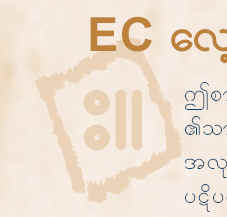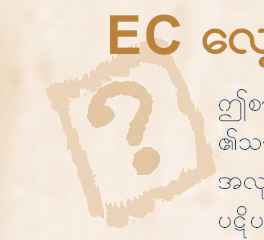Your Clients are Going Global – Can You Keep Up?
As more companies conduct business globally, their printing needs often involve more foreign language translation and typesetting. Being able to meet such growing needs may give your business a major competitive advantage. So, have you considered adding translation and typesetting to your printing offerings? The one-stop convenience may be a major draw for businesses that have frequent dealings overseas. They will most likely choose a printer that can handle everything rather than dividing the work up for several printers to handle.
So what do you need to do to get started?
When a client calls up and asks to have their existing English brochure printed in Chinese, you have several tasks in hand. You need to have the brochure translated, typeset and printed. Since printing is your core competency, we will only talk about the first two – translation and typesetting.
Taking care of Translation
Let’s first take care of the translation. You have the choice of using a freelance translator or a translation company.
You need more than a native speaker
Your translator should be a native speaker of the language that he translates into and he should also have sufficient professional translation experience. However, keep in mind that not all native speakers can be translators. Why? Just think of copy writing. Would you use an engineer to write your copy just because the engineer is a native speaker? No, copywriting and engineering are two different disciplines and require very distinctive skills. The same idea applies to good translators who are more than just native speakers of the language.
When material is technical
If the material is of technical or specialized nature, you might want to select someone who has had professional training and experience in that field. If the document is a Material Safety Datasheet (MSDS) on industrial gases, you may need someone who has a degree in chemical engineering to do a good job.
Team up a translator and an editor for high quality translations
Unless the document is for information use only, you will want to have a team of two translators on board, one for translating, and one for editing and proofreading. Having a fresh pair of eyes and a second opinion are very beneficial to high quality translations.
Cost saving opportunities for long documents
If your client hands you a very long document, especially if it is a technical document with a lot of repetitive phrases and sentences, you may want to ask the translator to use translation memory software to establish consistency among the repetitive units. There is also major cost savings possible. Usually you can expect to get a 50% discount off the regular price for repetitions.
Freelance translator or a translation agency?
If the selection of translators and using tools seem like a lot of work to you, you may want to consider the service of a professional translation company over freelancers. The cost is usually higher, but you will have the peace of mind of having professional project management help. Project managers at professional translation service firms work day in and day out recruiting translators and overlook the quality of translations. Their expertise is usually worth paying for.
If you decide to go with a translation company, you might want to ask some questions about their typesetting capabilities. Having the translation and typesetting taken care of in one shot will save you a lot of time and headaches. When you call to get an estimate, have them describe their process of dealing with the specific file format that you have. Don’t hesitate to ask for prior project samples and references. You want to choose a company that is technically competent to work on your project.
Typesetting foreign languages
In order to start typesetting foreign languages, you need additional software and an understanding of basic foreign language typesetting rules.
Software requirement for foreign language typesetting
For most Roman based languages such as Spanish or French, in order to have the full language support, you need to use QuarkXpress Passport or the InDesign English/ International version.
Full language support is more than the ability to enter and manipulate text. It provides hyphenation and spell checking as well as the ability to alphabetize lists properly such as table of contents and indexes. It also has additional import filters to handle language specific characters.
To typeset Slavic, Cyrillic, or Greek languages, you may want to look into the Central European version of InDesign. It can handle South and West Slavic languages such as Czech, Bulgarian, Croatian, Slovak, Polish, and Eastern Slavic languages such as Russian, Ukrainian, and Belarusian. It can also handle Albanian, Greek and Turkish.
If you are working with QuarkXpress, a separate set of dictionaries for those languages is available through a custom install of QuarkXpress Passport.
For Asian languages, QuarkXpress has different versions for Chinese, Japanese and Korean. For example, QuarkXpress has both a Simplified Chinese version and a Traditional Chinese version for the two different writing systems. While there is a Japanese version of InDesign, the Chinese language support is provided through a special plug-in called Asiaweb InChinese. InDesign doesn’t fully support Korean.
Software alone is not enough
You might be wondering, ‘so is it enough to have the software to do the job’?
The short answer is no and here is an example why. Recently we finished typesetting a Burmese project for a charitable organization. Usually our typesetters are native speakers of the languages. But in the case of Burmese, because it is such an uncommon language to typeset and experienced Burmese typesetters are scarce, the typesetter who did it actually did not understand Burmese.
In the review process after a first draft was produced, we discovered that the equivalent of a question mark in Burmese looks similar to a smiling face in the form of a square. The draft we created still kept the original English question marks and needed to be corrected.
 Burmese question mark |
English question mark used improperly in the Burmese document |
Mistakes like this one are hard to catch and it just shows how important it is to have a good understanding of the language you typeset.
Quality Assurance Review a must
Except for rare exceptions, it is better to have a native typesetter teamed with an experienced Quality Assurance person. A native typesetter comes in very handy not just for the initial process, but also later when changes come back. It sure helps to know the language when you insert client changes back into the document.
A crucial but sometimes overlooked role is that of a Quality Assurance (QA) reviewer. The real professional QAs have such trained eyes for errors, whether it is line breaking or truncated text in a text box. Having the QA process improves the quality of the typesetting results so much that it is definitely money well spent.
So should you outsource or should you do it in-house?
That depends. Doing it in-house can often mean faster turnaround and more control. If most of the foreign language typesetting work comes in a certain language, there might be very good benefits doing it in-house. It requires some investment in software purchase and personnel hiring and training. You can develop both the translation and the typesetting team or you may decide to only do the typesetting part in house.
If you only receive foreign language requests once in a while, or if the requests are spread across many different languages, you may want to consider outsourcing. It enables you to develop a very scalable operation without major initial investment.
When you outsource, there may be some hidden benefits. For example, we discovered that for longer documents in QuarkXpress or InDesign, using a Trados Storycollector plug-in can collect all the text and put it into a translator friendly format. Not only does the translator perform the translation faster and more consistently, the translated file is easily importable to the original files with very minor adjustments needed. You can save an average of 50% typesetting time for a long document. In addition, if there is a lot of repetition in the document, you may enjoy additional savings (up to 40%). Knowledge like that takes time to accumulate and an experienced vendor would be able to advise you of such cost saving opportunities.
Let’s do it!
In today’s ever changing business environment, being adaptive to client requirements differentiates you from your competitors. When your clients are going global, shouldn’t they expect you to keep up?
wintranslation is a professional translation service with offices in Windsor and Ottawa, Canada. It specializes in technical translation and foreign language typesetting.

